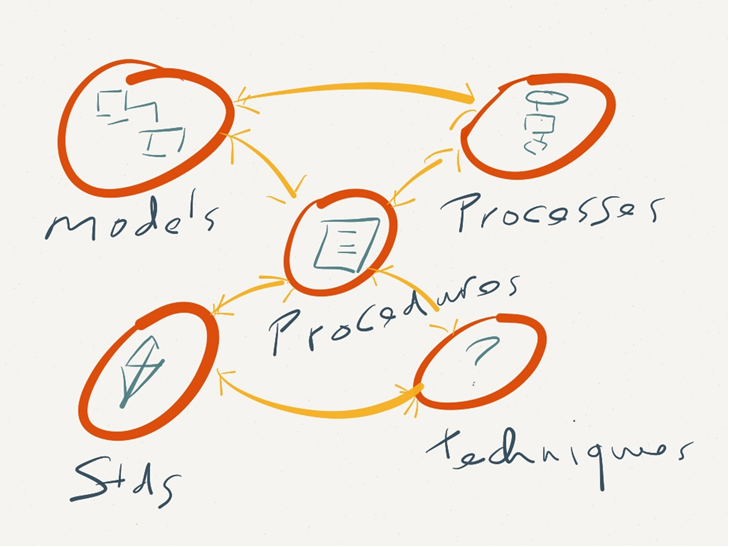Data Modelling – Where Do I start?
It is one thing knowing how to model, but knowing how to organise and manage a set of models that makes it fit for purpose and promotes best practice is entirely another.
So, where do we start in establishing a framework within which data modelling can truly add value to the organisation?
What we are aiming for is a database of
- the types of model required to support data management activities,
- the processes and procedures needed to manage their lifecycles, and
- the techniques and standards used in those procedures

I suggest we start by identifying the current data management practices and where the outputs from data modelling (e.g. Entity Relationship Diagrams, Data Dictionaries, Data Definition Language scripts) can add value to those activities. For more on what constitutes a model see more than just a picture blog.
The participants in the identified activities will provide the perspective and purpose we need to define the appropriate characteristics for a model in that context: scope, language, granularity, etc. (see conceptual blog).
The key events in the lifecycles of the models will provide a template for the processes required to manage a particular model type through its life. Start by identifying the main life of the model type, i.e. how is it created? Is it based on a reference model, an existing database or business requirements, etc.? What transformations are applied to it to provide the required outputs? What happens to the model when it has achieved its primary function?
On top of these main-life events, we can add events that support control objectives such as completeness, timeliness, accuracy, authenticity and confidentiality.
We then need to elaborate how each of the lifecycle events affects the model and specify what must be done to achieve the required effect. The procedures developed for this purpose need to take account of techniques and standards mandated by local practice, any adopted methodology, and available tools. For more on standards, see the standards blog.
While adoption of a data modelling tool is often seen as the most important factor in ensuring your modelling efforts are effective, I would argue that having the framework of knowledge around how to use the tools at your disposal are at least as important.
Check out our “erwin Data Modeler in 8 Minutes” video here
Have a look at erwin’s blog What Is Data Modeling?
